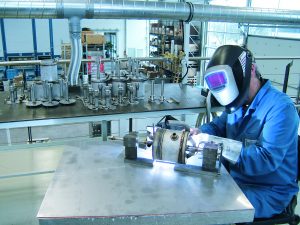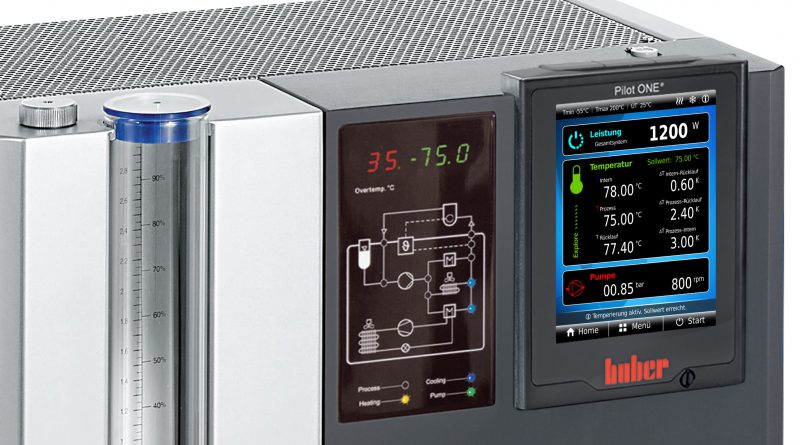Flow – It`s all about thermal transfer
Unistats® have been the leading technological solution for responsive and precise temperature control in a variety of demanding applications across all industries since their introduction in 1980. The Unistats® principle has for many years delivered reliable, dependable and reproducible temperature control.
Flow & thermal transfer
High “turbulent” flow is a key feature for efficient thermal transfer and temperature control. Unistat® pumps are purposefully designed and manufactured to generate high flow rates to achieve as turbulent a flow as possible for this reason. Inside our Unistats®, the heat transfer coefficient (“alpha value”) is maximized across the Unistat’s® heat exchangers (evaporator and heater) by generating and maintaining a high turbulent flow. This means that the power generated by the system is efficiently transferred from the the Unistat® to the application.
Applications with low flow resistance
In pressure sensitive applications (e.g. glass jacketed reactors); the maximum permissible pressure is typically 0,5 bar. The intent and purpose of the pump is to achieve the highest possible flow rate within this low pressure limit. This application “restriction” is addressed in the design and build of the Unistat® pump in that it generates high flow rates at comparatively low pressures. To maximize efficiencies and reduce losses, magnetically coupled pumps are avoided in favour of directly coupled pumps for low pressure applications. Why would you ever buy a TCU with a strong pressure pumpe that needs a more powerful and therefore more expansive refrigeration machine JUST to compensate the losses, if the application itself does not need this pressure or runs the risk of beeing destroyed (glass ware).

The Unistat® pump surely is
a piece or art, designed by
PETER HUBER in the late 70s.
Ever since each pump is
hand made, 100% quality tested
and field proven,
made to last for ever.
Applications with high flow resistance
Some applications however have fluid paths which generate a high flow resistance (e.g. Flow Through Reactors, heat exchangers). In these cases, increasing pressure can increase flow (this is not always the case as the maximum flow, regardless of pressure is dictated by the flow resistance of the system). To address these applications, we have added the option of using a pump that generates higher pressures to increase flow to the highest possible rate within the flow limits of the system (the “system curve”). It should be noted that high pressure pumps generate more heat which results in a loss of cooling power. For this reason, units fitted with a high pressure pump should only be considered for applications with a high flow resistance. We have expanded the Unistat® range with new models – specifically for these kind of applications. The new Unistats® with the additional “P” (Pressure) have powerful magnetically coupled circulation pumps with high pressure and should only be considered to be used for capable applications with high flow resistance.

The new Unistats® “P“ with high pressure pumps are specifically and only designed for
applications with high flow resistance and therefore requiring high pressure. (see Market 2)
We continue to recommend our proven Unistats® with standard circulating pumps for ALL
other applications. (see Market 1)
Find out more about our Unistat® “P“-models with high pressure pumps for applications with a high flow resistance
- Pump pressure up to 5.5 bar
- Specifically designed for applications requiring a high delivery pressure
- Proven Unistat regulation technology included
Résumé: Proper selection of the circulating pump is a major key to optimized temperature control
It is also key to your budget and to the running costs. Why buying a TCU with a strong pressure pumpe that needs a more powerful and more expansive refrigeration machine JUST to compensate that pump, if the application does not need it or runs the risk of beeing destroyed (glass ware).
Check the “small print“ to determine and which setting the pump is running at when the cooling powers are given. Devices which use high pressure pumps generate higher losses meaning less of the generated cooling power is transferred to the application. High flow results in efficient thermal transfer and better temperature control, not high pressure.
For more information please visit: www.huber-online.com


